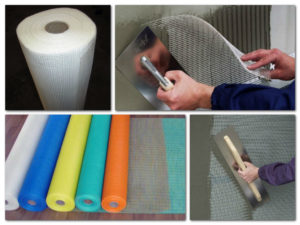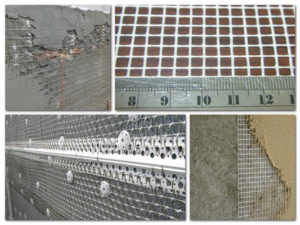Fiberglass is a fiber or a thread made of glass or its derivatives, but thanks to a complex manufacturing process, it eventually acquired unique properties that are uncharacteristic of conventional glass. It does not break at impact, but easily bends, without deforming or damaging. From materials produced on its basis, various products are produced that successfully replace traditional materials, and the sphere of application is the areas of construction, automotive industry, road works in other directions. In the article we will talk about varieties of fiberglass.
The production of artificial fibers and the use of materials based on it are of great interest as a progressive line of business. Today it occupies a huge part of the glass industry with decent capital investments. This suggests that fiberglass is a sought-after product among the range of manufactured goods in the modern world.
Synthetic fiberglass can be produced from various types of raw materials, including glass, slag, various rocks and minerals. Fiberglass can be produced by the method of continuous filaments, or in another way - in the form of a staple fiber.
Fiberglass Photo
Fiberglass Specifications
Fiberglass is popular and in demand as a material due to its remarkable properties, which differ significantly from the original material. Special attention should be paid to the following characteristics:
a high level of strength, which exceeds the strength of alloy steel. The diameter of the filaments of fiberglass is 7-9 microns. They are made of magnesium aluminosilicate glass and glass that does not contain alkali, have the highest strengths;
resistance to heat treatment. The structure of epoxy fiberglass is preserved even under strong heating, under conditions when natural fibers of organic origin are already completely destroyed;
giving additional strength in the composition of other materials. In this case, the glass fiber plays the role of a reinforcing base;
tolerance of some types of glass fibers to chemically and thermally aggressive environments - acids, hot water and high-pressure steam. The best indicators are fibers of silica, quartz and kaolin origin;
sound-absorbing properties. The noise-isolating effect is achieved due to the original structure of the material, in which the space remaining between the fibers is filled with microscopic air bubbles;
heat-insulating properties. The low density and air content among the fibers ensure heat retention in winter and lack of heating in summer;
incombustibility and environmental friendliness. Fiberglass does not ignite, does not burn and does not melt, which makes it a fireproof material and avoids the toxic substances that are released during the burning of many synthetic materials;
ability to maintain the original shape, perfectly resist aging and resist deformation;
change the properties of the material when wet. In wet form it loses its original properties, and when dried, it restores them again;
a poor ratio of fiberglass to bends and numerous abrasions. Processing with resins and varnishes changes the matter in a positive way;
economy of transportation. The fiberglass fabric is thin, flexible, but at the same time resilient. If it is necessary to transport it, it can be folded tightly enough and the fabric structure will not be disturbed. This saves space in transport, which means transportation costs.
The properties that the finished product will possess ultimately depend on the way the product is manufactured, the chemical composition of the raw materials, the environmental factors and the thickness of the glass fibers.
Materials based on fiberglass
Glass fiber itself is only a raw material for the production of various products - glass filaments, rovings and chopped fibers, from which various materials of construction, electrical insulation, production and construction purposes are subsequently manufactured.
From continuous fiberglass yarns are obtained:
glass fabrics, which are produced by the same weaving method as the ordinary cloth - by interlacing the longitudinal and transverse threads with each other. Depending on the type of weave - satin, linen, checkered or twill, density and wool, the yarns of the fabric differ in their properties and purpose. Fiberglass fabrics are electrical insulating, construction, construction, silica and roving. Depending on the brand price of fiberglass is 25-200rub / m2 $
reinforced fiberglass and ribbons, differing in the size of the cell, the type and density of impregnation and intended for road or building exterior and interior decoration work;
plastic fiberglass - composites with a variety of properties, which are set initially depending on the operating conditions. They make it possible to produce products of any complexity and configuration, and that is why glass fibers in combination with polymers have received the widest application and distribution in the most diverse spheres of our life.
From staple fiberglass yarns and chopped fibers, you can buy the following fiberglass:
insulation - glass wool and glass;
glass wool of various degrees of thickness, fiberglass;
such raw materials are also used as a component of mortars.
Each of these materials has its own unique features and individual characteristics, which provides unlimited opportunities for the widest use of them in all areas of human life.
Fiberglass Application
Today, without construction of fiberglass, construction, repair and finishing works are not enough. This material is also used for road works. He was widely used in auto and shipbuilding, in the production of household, sports and medical products. And because of its excellent dielectric properties, it has long been used in the energy industry as insulation materials.
Application of fiberglass in construction
A lot of fiberglass products are used in construction. One of them is fiberglass reinforcement, which was developed as a replacement for steel. The fact is that for a long time steel was practically the only material that had the properties necessary for the reinforcing element - exceptional strength and durability. There was no alternative, which meant that we had to put up with the shortcomings of steel. When the development of technologies made it possible to obtain materials with previously inaccessible properties, the standards for the production of building materials, including reinforcing ones, also changed. In place of steel came the composite fiberglass reinforcement.
It has the strength and reliability of steel, but at the same time it is several times lighter than it, it is not susceptible to corrosion, it is resistant to adverse effects of moisture, has low thermal conductivity, does not conduct electricity and is completely chemically inert. All these remarkable qualities ensure the widest possible use of the composite in a wide variety of applications - for reinforcing foundations, concrete structures and road or aviation linen, fixing thermal insulation, in the form of reinforcing nets for a bearing or facing layer during construction or repair of buildings, for erection of lighting supports, fences , sewage and meliorative structures.
Another glass fiber product is glass fiber, which is added to the concrete solution as a fastener. As is known, the usual concrete mixture during shrinkage is subject to shrinkage, as a result of which microcracks are formed. What is undesirable, since it negatively affects the quality of concrete and its durability. Adding fiber to the solution changes the matter. When fresh concrete begins to freeze, chemical and physical processes can lead to the formation of defects inside the solution. Fibers of fiberglass can stop the germination of microcracks in the early stages of hardening. In some cases, such a composition makes it possible to do without additional reinforcement. Glass fiber is used to create aerated concrete, foam concrete and cellular concrete, in dry mixtures and plasters, screeds and wall panels for buildings, etc. The obtained products are of better quality and with higher characteristics.
Fiberglass is a wonderful insulation. What is good in construction for thermal insulation of various unloaded structures, inside and outside buildings. For outdoor works it is used in the system of ventilated facades as an independent element of warming or as part of sandwich panels. Can be used in rolls or mats. Internal works include the insulation of the roof, attic space, thermal insulation of walls and ceilings, internal partitions of conventional and frame buildings. Fiberglass products are also insulated with various communications suitable for buildings - pipelines, sewerage and ventilation systems, heating. For these purposes, needle-punched materials are mainly used. Possessing steam and heat reflecting qualities foil mats isolate cold rooms, saunas and similar premises.
Repair and decoration of premises also can not do without fiberglass products. Their main purpose is to create a reinforcing layer on the surface during plastering. Thus, the restoration is successful. A lot of small cracks or one large crack can be closed with the help of putty fiberglass.
In addition, it is used as a reinforcing element before pouring the filler floor, laying waterproofing, to strengthen the connections of sheets of gypsum board. For finer finishing of surfaces for painting, when working with gypsum cardboard, a more elegant version of the reinforcing material - non-woven glass-fiber cloth - is used to prevent the appearance of small flaws and to obtain an ideal pattern. Finishing with the use of fiberglass gives always excellent results, high-quality uniform coating without defects and flaws. In addition, it is also a guarantee that the ideal state of the surface in the near future will not be violated.
Another glass fiber finishing material is glass mosaic - a fine decorative coating, but requiring a large amount of paint because of its high absorbency properties. Unlike conventional wallpaper, they are hardy, withstand mechanical stress and exposure to chemical media.
Application of fiberglass in road and industrial construction
The widespread use of fiberglass was obtained in industrial and road construction. Here it is irreplaceable as a binding component. The roadway with the laid fiberglass reinforcement, provided that the construction technology is observed, does not crack and does not crack under loads. The presence of a glass mesh in the layers of the road ensures the increase in productivity and the period of their operation, reduces the thickness of the asphalt covering, prevents the formation and spread of cracks and potholes, increases the patency and longevity of roads, allows to increase the time between repairs.
In hydrotechnical construction without reinforcing fiberglass nets, construction of dams, embankments, bridges, retaining walls, storm collectors is not complete. A significant part of the sewerage tanks (sedimentation tanks, filters, septic tanks) is made of all the same fiberglass.
From it, seats are built, installed in stadiums, airports, auto and railway stations; equipment of stops, pools. Wherever there is a large crowd of people.
The use of fiberglass in automotive and shipbuilding
Fiberglass and composite glass fiber reinforced plastic, due to its low weight and exceptional strength, ability to be well machined and dyed, are therefore in demand in the automotive industry and motorsport. Of these materials, various parts of the body are produced - doors, roofs, trunk lids, hoods. And also bumper, spoilers, body kit, rails and interior parts of the cabin. Fiberglass is used to impart additional rigidity to tires, and in mufflers as a soundproof material.
In the tuning studio, fiberglass products are used to create finishing elements due to the ability to easily copy the shape of the workpiece to reproduce the necessary detail. Simplicity in processing, small thickness, flexibility and plasticity of the material make it possible to manufacture products of varying degrees of complexity and shape from it.
The same remarkable qualities of fiberglass ensure its application on an industrial scale and in the shipbuilding industry. Cases of motor and rowing boats, racing and cruising yachts, small-tonnage fishing boats, scooters and boats are partially or completely made of this material. Fiberglass can be other parts of ships.
Fiberglass boat video
Other ways of using fiberglass
Depending on the thickness of fiberglass, it produces various consumer goods and other products:
plumbing parts - biotoilets, septic tanks, shower cabins, pool bowls;
goods for sport and recreation - oars for rowing, ski poles, fishing rods, etc.;
boxes and containers for solid household waste;
medical products used in dentistry - seals and non-removable dentures, tapes for splinting teeth;
medical products used in orthopedics - prostheses, crutches, walking sticks;
a variety of types of tubes for household use - antennas, holders, flagpoles;
electrical products - indicators, fuses, earthing.
This is not a complete list of enumerations of all places where fiberglass products can be used. Every day the scope of their application is expanding more and more, covering all new and new spheres of our activity.
The wide distribution and use of fiberglass and products based on it became possible due to the achievements of modern production, high technologies in the field of chemical industry, in particular polymers and composite materials, and high requirements for the quality of the final product. Fiberglass is a unique product that perfectly meets the realities of the time and the required characteristics and properties inherent in modern materials. Therefore, such a diversified application is not surprising.
Formed from melts. Inorg. glass. A distinction is made between a continuous glass fiber-complex glass filament with a length of 20 km (or more), a diameter of 3-50 μm, and a staple glass fiber with a length of 1-50 cm and a fiber diameter of 0.1-20 μm.
Receiving. A continuous glass fiber is obtained by spun-forming a beam of thin melt. glass mass with the last, extraction, lubrication and winding of the complex filament on the bobbin at high (10-100 m / s) linear speeds. Staple glass fiber is formed by rupturing a molten stream. glass after leaving the die, hot or other methods. It is also obtained by chopping complex filaments.
From a continuous glass fiber make twisted complex yarns, unidirectional tapes, bundles. Complex glass filaments are distinguished by the composition of glass, the average diameter of the fiber (3-15 μm or more), the number of filaments (50-800), twist. Of twisted yarn is made, mesh, tape on looms. Glass is distinguished by the type of weave (linen, twill, satin, etc.) and density (number of threads per cm on the basis and weft). Their width varies within 500-1200 mm, thickness-0.017-25 mm, weight 1 m 2 -25-5000 g. The bundles and bands are obtained by combining 10-60 complex filaments. Staple glass fibers and strands of threads, cut from bobbins (length 0,3-0,6 m), are used for making glass wool, canvas, mats, plates. Canvases obtained from chopped fiberglass or continuous filaments, usually resins or fur. firmware.
The composition and properties of the glass fiber are determined by the composition and sv-you fiber-forming glass from which it is made. Depending on the composition, there are several. grades of such glass (Table 1).
A-glass is also called lime-sodium, C-glass-sodium borosilicate, E-glass-aluminum-borosilicate, S-glass-magnesian-aluminosilicate. Naib. Important characteristics of glass fibers are given in Table. 2.
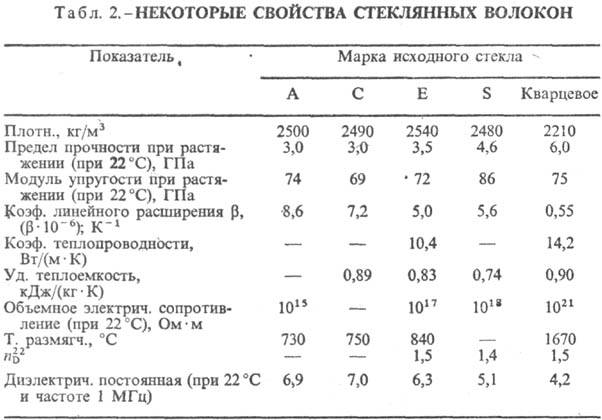
Increase. glass fiber (as compared to the original glass) is explained in different ways: by "freezing" the isotropic structure of high-temperature glass or by the presence of a strong surface layer (a thickness of about 0.01 μm), which is formed during the spinning process due to a larger and stretch than in int. layers.
With short-term loading, the glass fiber behaves almost like a resilient, fragile body, right down to the rupture submitting. With the long. The action of the load shows an increase, an elastic aftereffect, depending on the composition of the glass and. With increasing fiber diameter, resistance to bending and torsion increases and decreases with stretching. In wet, in and in water, the surfactant of glass fiber is reduced by 50-60%, but is partially restored after.
From high-alkaline A-glass, fibers are obtained that are less resistant to E-glass fibers, but are resistant to action.
Higher chemical. Stability in comparison with A-glass provides C-glass. The loss of weight of fibers from such glasses during processing is 0.02-0.05 g / m, and when treated with alkali p-frames, 0.3-2.5 g / m.
Fiberglass is a fiber or a thread made of glass or its derivatives, but thanks to a complex manufacturing process, it eventually acquired unique properties that are uncharacteristic of conventional glass. It does not break at impact, but easily bends, without deforming or damaging. From materials produced on its basis, various products are produced that successfully replace traditional materials, and the sphere of application is the areas of construction, automotive industry, road works in other directions. In the article we will talk about varieties of fiberglass.
The production of artificial fibers and the use of materials based on it are of great interest as a progressive line of business. Today it occupies a huge part of the glass industry with decent capital investments. This suggests that fiberglass is a sought-after product among the range of manufactured goods in the modern world.
Synthetic fiberglass can be produced from various types of raw materials, including glass, slag, various rocks and minerals. Fiberglass can be produced by the method of continuous filaments, or in another way - in the form of a staple fiber.
Fiberglass Photo
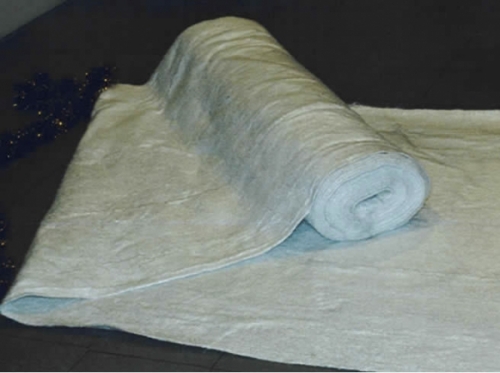
Fiberglass Specifications
Fiberglass is popular and in demand as a material due to its remarkable properties, which differ significantly from the original material. Special attention should be paid to the following characteristics:
- high level of strength, which exceeds the strength of alloy steel. The diameter of the filaments of fiberglass is 7-9 microns. They are made of magnesium aluminosilicate glass and glass that does not contain alkali, have the highest strengths;
- resistance to heat treatment. The structure of epoxy fiberglass is preserved even under strong heating, under conditions when natural fibers of organic origin are already completely destroyed;
- imparting additional strength to other materials. In this case, the glass fiber plays the role of a reinforcing base;

- tolerance of some types of glass fibers to chemically and thermally aggressive media - acids, hot water and high-pressure steam. The best indicators are fibers of silica, quartz and kaolin origin;
- sound-absorbing properties. The noise-isolating effect is achieved due to the original structure of the material, in which the space remaining between the fibers is filled with microscopic air bubbles;
- heat-insulating properties. The low density and air content among the fibers ensure heat retention in winter and lack of heating in summer;
- incombustibility and environmental friendliness. Fiberglass does not ignite, does not burn and does not melt, which makes it a fireproof material and avoids the toxic substances that are released during the burning of many synthetic materials;
- ability to maintain the original form, perfectly resist aging and resist deformation;
- change in material properties when wet. In wet form it loses its original properties, and when dried, it restores them again;
- a poor ratio of fiberglass to bends and numerous abrasions. Processing with resins and varnishes changes the matter in a positive way;
- economy of transportation. The fiberglass fabric is thin, flexible, but at the same time resilient. If it is necessary to transport it, it can be folded tightly enough and the fabric structure will not be disturbed. This saves space in transport, which means transportation costs.
The properties that the finished product will possess ultimately depend on the way the product is manufactured, the chemical composition of the raw materials, the environmental factors and the thickness of the glass fibers.
Materials based on fiberglass
Glass fiber itself is only a raw material for the production of various products - glass filaments, rovings and chopped fiber, from which various materials of construction, electrical insulation, production and construction purposes are subsequently manufactured.
From continuous fiberglass yarns are obtained:
- fiberglass, which are produced by the same weaving method as the ordinary cloth - by interlacing the longitudinal and transverse threads with each other. Depending on the type of weave - satin, linen, checkered or twill, density and wool, the yarns of the fabric differ in their properties and purpose. Fiberglass fabrics are electrical insulating, construction, construction, silica and roving. Depending on the brand price of fiberglass is 25-200rub / m2 $
![]()
- reinforced fiberglass and tape, differing in the size of the cell, the type and density of impregnation and intended for road or building exterior and interior decoration works;
- plastic fiberglass - Composites with a variety of properties, which are set initially depending on the operating conditions. They make it possible to produce products of any complexity and configuration, and that is why glass fibers in combination with polymers have received the widest application and distribution in the most diverse spheres of our life.
From staple fiberglass yarns and chopped fibers, you can buy the following fiberglass:
- insulation - glass wool and glass;
- glass wool of various degrees of thickness, fiberglass;
- such raw materials are also used as a component of mortars.
Each of these materials has its own unique features and individual characteristics, which provides unlimited opportunities for the widest use of them in all areas of human life.
Fiberglass Application
Today, without construction of fiberglass, construction, repair and finishing works are not enough. This material is also used for road works. He was widely used in auto and shipbuilding, in the production of household, sports and medical products. And because of its excellent dielectric properties, it has long been used in the energy industry as insulation materials.
Application of fiberglass in construction
A lot of fiberglass products are used in construction. One of them is fiberglass reinforcement, which was developed as a replacement for steel. The fact is that for a long time steel was practically the only material that had the properties necessary for the reinforcing element - exceptional strength and durability. There was no alternative, which meant that we had to put up with the shortcomings of steel. When the development of technologies made it possible to obtain materials with previously inaccessible properties, the standards for the production of building materials, including reinforcing ones, also changed. In place of steel came the composite fiberglass reinforcement.
![]()
- It has the strength and reliability of steel, but at the same time it is several times lighter than it, it is not susceptible to corrosion, it is resistant to adverse effects of moisture, has low thermal conductivity, does not conduct electricity and is completely chemically inert. All these remarkable qualities provide the composite with the widest use in a wide variety of applications - for the reinforcement of foundations, concrete structures and road or aircraft linen, fastening of thermal insulation, in the form of reinforcing nets for a bearing or facing layer during the construction or repair of buildings, for the erection of lighting supports, fences, sewage and meliorative structures.
- Another fiberglass product is glass fiber, which is added to the concrete solution as a fastener. As is known, the usual concrete mixture during shrinkage is subject to shrinkage, as a result of which microcracks are formed. What is undesirable, since it negatively affects the quality of concrete and its durability. Adding fiber to the solution changes the matter. When fresh concrete begins to freeze, chemical and physical processes can lead to the formation of defects inside the solution. Fiber glass fibers can stop the germination of microcracks in the early stages of hardening. In some cases, such a composition makes it possible to do without additional reinforcement. Glass fiber is used to create aerated concrete, foam concrete and cellular concrete, in dry mixtures and plasters, screeds and wall panels for buildings, etc. The obtained products are of better quality and with higher characteristics.
- Fiberglass is a wonderful insulation. What is good in construction for thermal insulation of various unloaded structures, inside and outside buildings. For outdoor works it is used in the system of ventilated facades as an independent element of warming or as part of sandwich panels. Can be used in rolls or mats. Internal works include the insulation of the roof, attic space, thermal insulation of walls and ceilings, internal partitions of conventional and frame buildings. Fiberglass products are also insulated with various communications suitable for buildings - pipelines, sewerage and ventilation systems, heating. For these purposes, needle-punched materials are mainly used. Possessing steam and heat reflecting qualities foil mats isolate cold rooms, saunas and similar premises.
- Repair and decoration of premises also can not do without fiberglass products. Their main purpose - creation of a reinforcing layer on the surface during plastering works. Thus, the restoration is successful. A lot of small cracks or one large crack can be closed with the help of putty fiberglass.
- In addition, it is used as a reinforcing element before filling the filling floor, the laying of waterproofing, to strengthen the connections of sheets of gypsum board. For finer finishing of surfaces for painting, when working with gypsum cardboard, a more elegant version of the reinforcing material - non-woven glass-fiber cloth - is used to prevent the appearance of small flaws and to obtain an ideal pattern. Finishing with the use of fiberglass gives always excellent results, high-quality uniform coating without defects and flaws. In addition, it is also a guarantee that the ideal state of the surface in the near future will not be violated.

- Another finishing material made of fiberglass is glass walls - a beautiful decorative coating, but requiring a large amount of paint because of its high absorbency properties. Unlike conventional wallpaper, they are hardy, withstand mechanical stress and exposure to chemical media.
Application of fiberglass in road and industrial construction
- The widespread use of fiberglass was obtained in industrial and road construction. Here it is irreplaceable as a binding component. The roadway with the laid fiberglass reinforcement, provided that the construction technology is observed, does not crack and does not crack under loads. The presence of a glass mesh in the layers of the road ensures the increase in productivity and the period of their operation, reduces the thickness of the asphalt covering, prevents the formation and spread of cracks and potholes, increases the patency and longevity of roads, allows to increase the time between repairs.
- In hydrotechnical construction without reinforcing fiberglass nets, construction of dams, embankments, bridges, retaining walls, storm collectors is not complete. A significant part of the sewerage tanks (sedimentation tanks, filters, septic tanks) is made of all the same fiberglass.

- From it, seats are built, installed in stadiums, airports, auto and railway stations; equipment of stops, pools. Wherever there is a large crowd of people.
The use of fiberglass in automotive and shipbuilding
- Fiberglass and composite glass fiber reinforced plastic, due to its low weight and exceptional strength, ability to be well machined and dyed, are therefore in demand in the automotive industry and motorsport. Of these materials, various parts of the body are produced - doors, roofs, trunk lids, hoods. And also bumper, spoilers, body kit, rails and interior parts of the cabin. Fiberglass is used to impart additional rigidity to tires, and in mufflers as a soundproof material.
- In the tuning studio, fiberglass products are used to create finishing elements due to the ability to easily copy the shape of the workpiece to reproduce the necessary detail. Simplicity in processing, small thickness, flexibility and plasticity of the material make it possible to manufacture products of varying degrees of complexity and shape from it.

- The same remarkable qualities of fiberglass ensure its application on an industrial scale and in the shipbuilding industry. Cases of motor and rowing boats, racing and cruising yachts, small-tonnage fishing boats, scooters and boats are partially or completely made of this material. Fiberglass can be other parts of ships.
Fiberglass boat video
Other ways of using fiberglass
Depending on the thickness of fiberglass, it produces various consumer goods and other products:
- plumbing parts - biotoilets, septic tanks, shower cabins, pool bowls;
- goods for sport and recreation - oars for rowing, ski poles, fishing rods, etc.;
- boxes and containers for solid household waste;
- medical products used in dentistry - seals and non-removable dentures, tapes for splinting teeth;
- medical products used in orthopedics - prostheses, crutches, walking-sticks;
- a variety of types of tubes for household use - antennas, holders, flagpoles;
- electrical products - indicators, fuses, earthing.
This is not a complete list of enumerations of all places where fiberglass products can be used. Every day the scope of their application is expanding more and more, covering all new and new spheres of our activity.
The wide distribution and use of fiberglass and products based on it became possible due to the achievements of modern production, high technologies in the field of chemical industry, in particular polymers and composite materials, and high requirements for the quality of the final product. Fiberglass is a unique product that perfectly meets the realities of the time and the required characteristics and properties inherent in modern materials. Therefore, such a diversified application is not surprising.
The photo shows the work of an extruder that divides molten glass into individual fibers
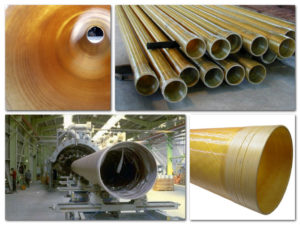
Polymer pipes made with the addition of fiberglass are at times stronger than conventional polyethylene pipes.
Fiberglass composite pipes are non-combustible, and therefore they are an excellent option for laying communications.
Glass fiber - what it is and how it is applied
Glass fiber is a glass fiber, which when kneading is mixed into a solution. Fiber, added in small volumes to the solution, when the concrete hardens, strengthens the building material and, thus, prevents the formation of cracks.
Advantages of glassfibre in comparison with metal fittings:
- Low weight and, as a consequence, a smaller load on;
- Lower price, which reduces the cost of construction work;
- Resistance to corrosive processes - for comparison, metal fittings in concrete are oxidized and destroyed in the first 15-20 years;
- Resistant to chemically aggressive action, which makes the resource of using the material virtually unlimited.
The instruction for adding fiberglass to the cement-sand mortar provides for proportions of 5-10% of the total ready-mixed concrete. Mixing of the fiber is carried out in a dry mixture, after which the contents of the mixer are closed by water.
Glass net - what it is and how it is applied
Fiberglass is woven into a net, which is universally used as a reinforcing material for plastering and painting.
| Illustrations | Types of glass mesh and application in construction |
|
Paint (cell side up to 5 mm). Reinforcing material is used to strengthen the finish finishing layer. Since the finishing layer is not thicker than 1-2 mm, the thickness of the fibers in such a glass net does not exceed 0.8 mm. The main purpose of the material is to prevent the formation of cracks on the surface of the leveling layer of interior plaster. |
|
Plaster (side of the cell from 5 mm and more). Such a mesh is used as a reinforcing substrate when plastering the outside of the building. To produce this material, a fiber with a density of 90 g / m² or more is used. Glass fibers are characterized by absolute resistance to the action of chemically aggressive substances. Therefore, the reinforcing layer in the thickness of the cement plaster for a long time remains intact and, if it becomes unusable, it is only because of mechanical loads. |
Let's sum up the results
Now you know how and what is used for fiberglass. You can get acquainted with the details by watching the video in this article. If you have any questions, ask them in your comments.
Fiberglass belongs to the class of mineral wool, and this material is formed from molten glass. This material has many useful properties. He is not able to fight, break, but can perfectly bend and succumb to other types of deformation. Such qualities have provided fiberglass wide application in the industry. One of the widest areas of application of the material is the production of fiberglass reinforcement.
Manufacture of fiberglass
In the production of fiberglass, the same types of raw materials are used as in the manufacture of glass. Therefore, the process requires sand, soda, limestone, dolomite and other materials. Depending on which method of mixture processing is used, it is possible to obtain two types of glass fibers.
For the formation of continuous fiberglass, a method of drawing fibers from plastic is used. At the same time, the finished products resemble silk threads.
For the formation of staple fiberglass, a method is used to blow a jet of molten glass with steam, hot gas or air. Finished products are similar to cotton or linen fibers. Such fiberglass is long-fiber and short-fibred.
Equipment for the production of fiberglass
The company TPK "NANO-SK" uses the most modern equipment for the production of fiberglass, which ensures high quality of the material. Factories for the production of fiberglass are equipped with special machines, which are serviced by highly qualified specialists. Production is carried out under strict quality control.
Equipment for the production of fiberglass ZHY has several advantages, allowing you to create fiberglass for the production of reinforcement. Technologies, which are developed at Chinese factories, are used here for the production of high-quality raw materials. Such technologies are used in the production of products offered by TPK "NANO-SK", therefore the company can guarantee the production of reinforcement from high-quality materials. The production line includes several stages, which are constantly monitored.
Fiberglass production of unique characteristics
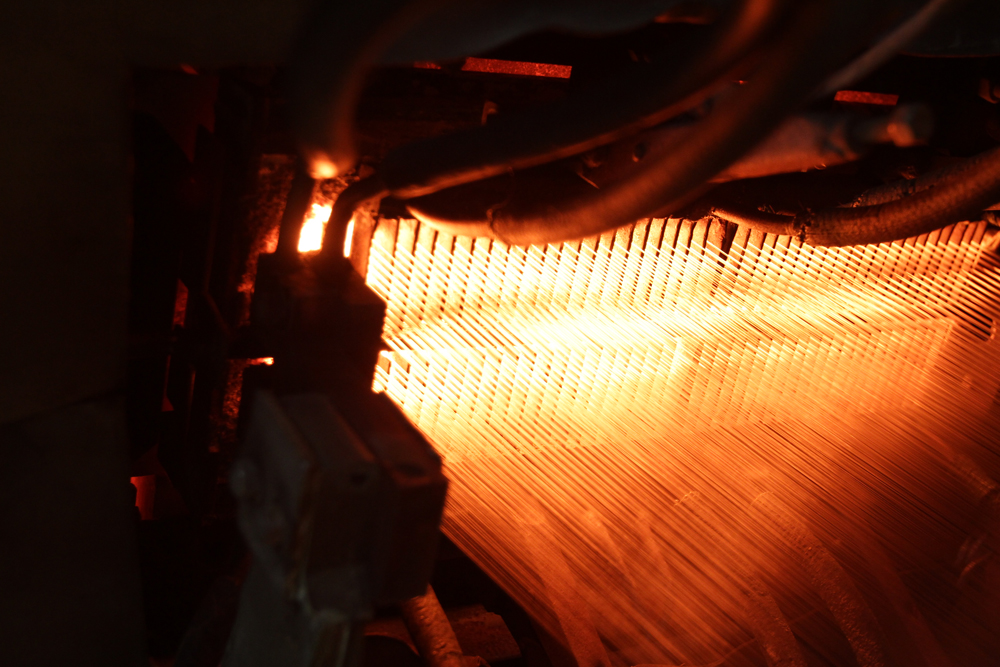 Modern equipment ZHY provides unique qualities of fiberglass, which determine the functional and operational capabilities of this material. Fiberglass has the properties to hold air well, so it perfectly protects both from heat and from cold. In addition, the structure of the material provides it with high strength, resistance to vibrations and a low coefficient of thermal conductivity. These qualities are also transferred to fiberglass reinforcement, and they determine the wide scope of its use.
Modern equipment ZHY provides unique qualities of fiberglass, which determine the functional and operational capabilities of this material. Fiberglass has the properties to hold air well, so it perfectly protects both from heat and from cold. In addition, the structure of the material provides it with high strength, resistance to vibrations and a low coefficient of thermal conductivity. These qualities are also transferred to fiberglass reinforcement, and they determine the wide scope of its use.
Fiberglass is also characterized by its stability and long life. It is non-toxic and light in weight, so the transportation of the reinforcement will be convenient and inexpensive.
TPK "NANO-SK" uses fiberglass for the production of valves of various types and sizes. Products are delivered to construction sites in Moscow, the region, as well as in central regions of Russia. Reinforcing elements for fiberglass concrete in many ways superior to metal reinforcement. And this is a fact, which is becoming more and more known today. Therefore, the use of fiberglass in construction is increasingly gaining popularity.
 Fiberglass reinforcement is a building material of the XXI century. The company TPK "Nano-SK" offers these products for various purposes, but their main purpose is to ensure the strength of concrete structures. A new kind of reinforcing material is increasingly displacing such customary for all metal structures for reinforcing concrete. After all, it can be used wherever metal can not provide reliability and durability. In addition, builders are attracted by a high level of economy of material.
Fiberglass reinforcement is a building material of the XXI century. The company TPK "Nano-SK" offers these products for various purposes, but their main purpose is to ensure the strength of concrete structures. A new kind of reinforcing material is increasingly displacing such customary for all metal structures for reinforcing concrete. After all, it can be used wherever metal can not provide reliability and durability. In addition, builders are attracted by a high level of economy of material.
This may seem strange, but fiberglass reinforcement, the price of which is more affordable, has more strength than the metal one. But this is not all its advantages. To better understand the effectiveness of this modern material, it is worth a closer look at its other merits.
- The fiberglass structure provides strength, which is twice as high as the corresponding index for the metal.
- The material weighs 8-9 times less than the same thickness of metal products.
- Working with fiberglass products is much more convenient, they are easy to carry, cut, knit, and create geometric shapes of any complexity.
- The material is not at all susceptible to rotting, buckling and corrosion, which can not be said for metal.
- The uniqueness of chemical resistance makes it possible to use fiberglass reinforcement in potassium medium, in places where alkalis, hydrochloric acid,
sea water. - The extremely low thermal conductivity gives fiberglass insulation properties.
- Resistance to fire, and in case of fire, the absence of strong gases - dioxins is also a big plus.
- High performance properties, designs with the use of this material have a long service life.
- Low costs for transporting materials or finished structures can significantly save money.
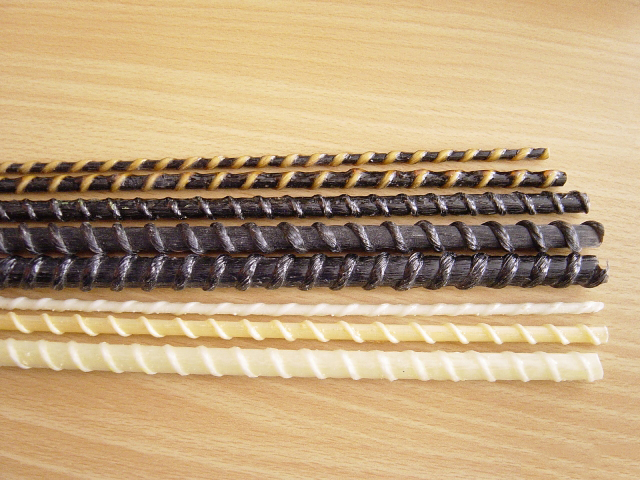 Composite armature costs one and a half times less than its traditional analog - steel. At the same time, it can be used at temperatures from -70 to +150 о С, and this is a worthy indicator. Confirming that the price per meter of fiberglass reinforcement is more profitable is the 20-30 percent savings that can be achieved during transportation, loading and unloading and during installation, which does not require welding. In addition, modern material increases the service life of reinforced concrete structures by 3-4 times.
Composite armature costs one and a half times less than its traditional analog - steel. At the same time, it can be used at temperatures from -70 to +150 о С, and this is a worthy indicator. Confirming that the price per meter of fiberglass reinforcement is more profitable is the 20-30 percent savings that can be achieved during transportation, loading and unloading and during installation, which does not require welding. In addition, modern material increases the service life of reinforced concrete structures by 3-4 times.
The company TPK "NANO-SK" is a direct manufacturer of building fittings made of fiberglass. Modern equipment and its constant modernization allow improving the physical and mechanical characteristics. 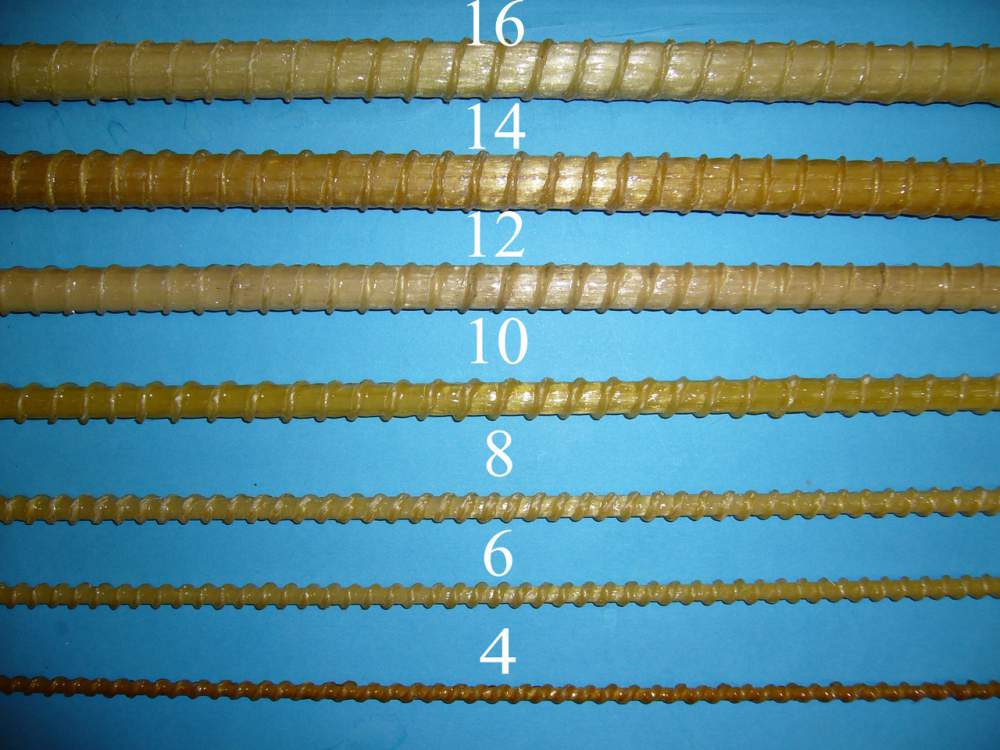 This material has properties superior to metal reinforcement. Therefore, composite amplifying
This material has properties superior to metal reinforcement. Therefore, composite amplifying
designs are increasingly used in the construction of berths, landing stripes, dry docks, the construction of structures that are corroded and used in an aggressive environment.
The armature, which is produced at the TPK "NANO-SK" plants, corresponds to the parameters specified in the state standard GOST 31938-2012. The company offers high quality products in Moscow and the region. Also supplies are delivered to the cities of central Russia. The feedback that the fiberglass reinforcement receives is an indication that this is the material of the future. Its constant improvement will allow to provide higher characteristics and expand the scope of application.

